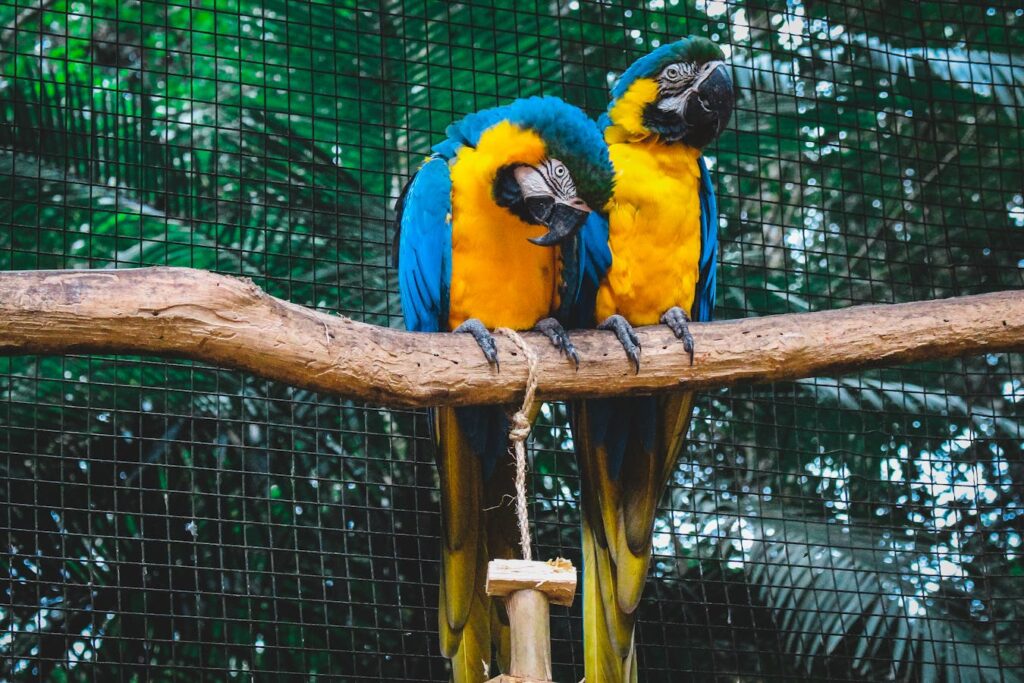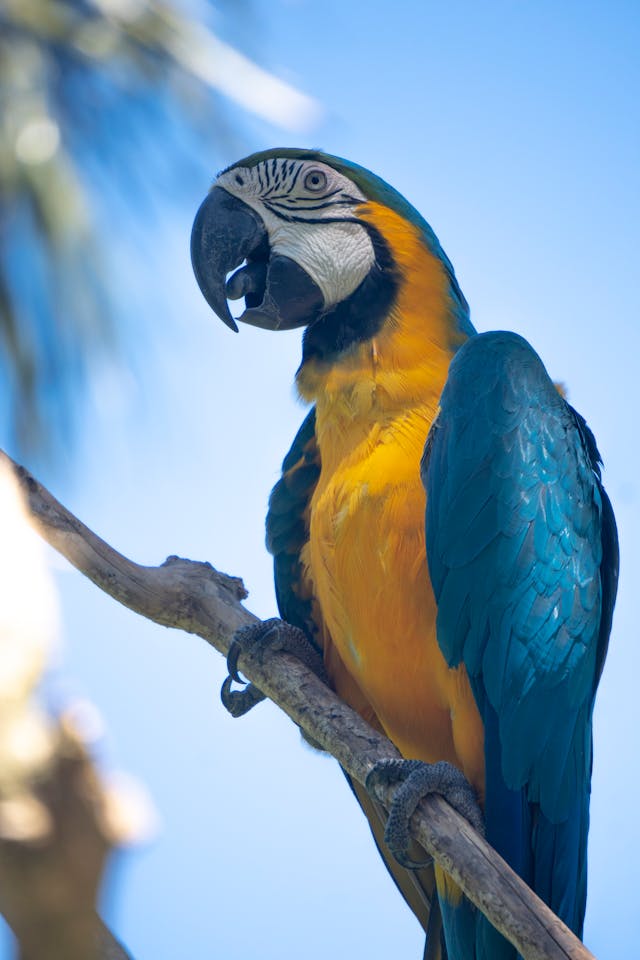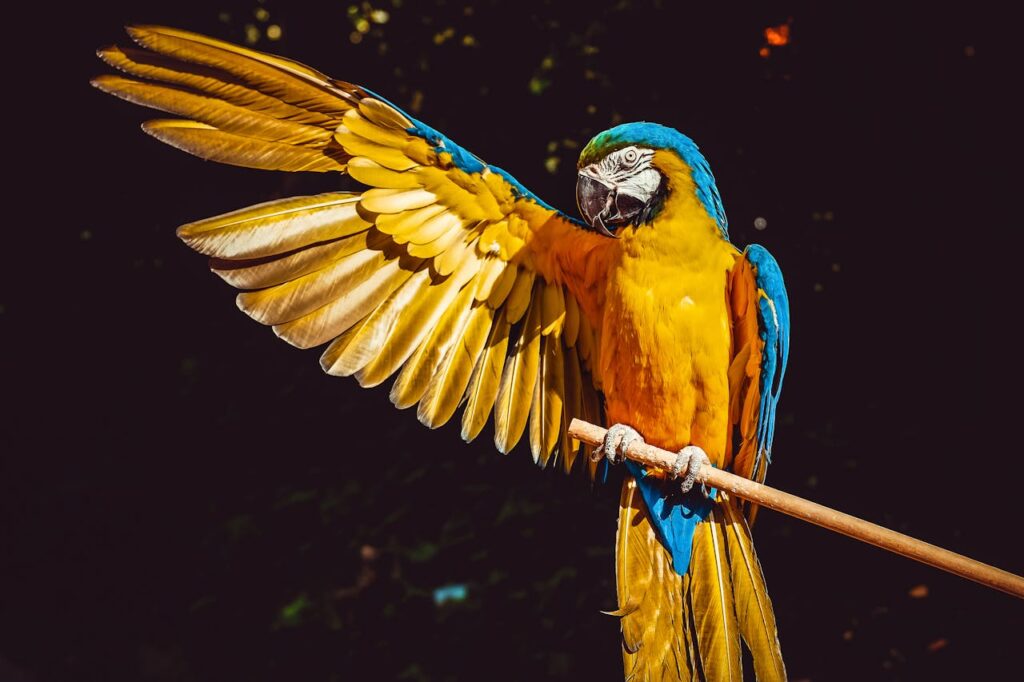
Discover the beauty of the blue and gold macaw, their care requirements, diet, and behavior. Learn more about these majestic parrots and consider adding one to your family. Find out more!Read More
All About Blue and Gold Macaw: Characteristics, Care, and Habitat
The Blue-and-Yellow Macaw, scientifically known as Ara ararauna, or commonly referred to as the Blue-and-Gold Macaw, is a sizable parrot native to South America. Its plumage predominantly showcases shades of blue on its upper body and light orange on its underparts, complemented by subtle gradients of green atop its head.
Highly intelligent and social, these majestic birds are popular choices for aviculturists. They tend to form lifelong partnerships, often nesting in hollowed-out palm trees.
Appearance of Blue and Gold Macaw
- Large parrots with a length of around 35 inches and a wingspan of up to 45 inches.
- Vivid blue feathers covering their back, wings, and tail.
- Bright golden yellow feathers on their chest, underside of wings, and belly.
- Green forehead with a gradient blend into the blue plumage.
- Black beak and a patch of black feathers under the chin.
- White patches of bare skin around the eyes with sparse black feathers.

Behaviour of Blue and Gold Macaw

- Intelligent and social birds that bond strongly with their mates.
- Known for their playful and clownish personalities.
- Highly vocal and can mimic sounds and speech.
- Require a lot of mental and physical stimulation to prevent boredom.
- Active birds that love to climb, swing, chew, and forage.
Diet
- Primarily eat nuts, seeds, fruits, and flowers in the wild.
- In captivity, they need a balanced diet of pellets, fresh fruits and vegetables, and nuts.
Habitat
Found in forests, woodlands, and savannas of Central and South America, including Trinidad.
Lifespan
- Can live up to 50 years in the wild
- Can live up to 60+ years in captivity with proper care.
Bonding
Blue and Gold Macaws are known to form strong bonds with their owners and may become affectionate companions with proper socialization and training. These macaws are social creatures and enjoy interaction with their owners or other birds. They thrive on socialization and mental stimulation.

Subscribe to our newsletter!


